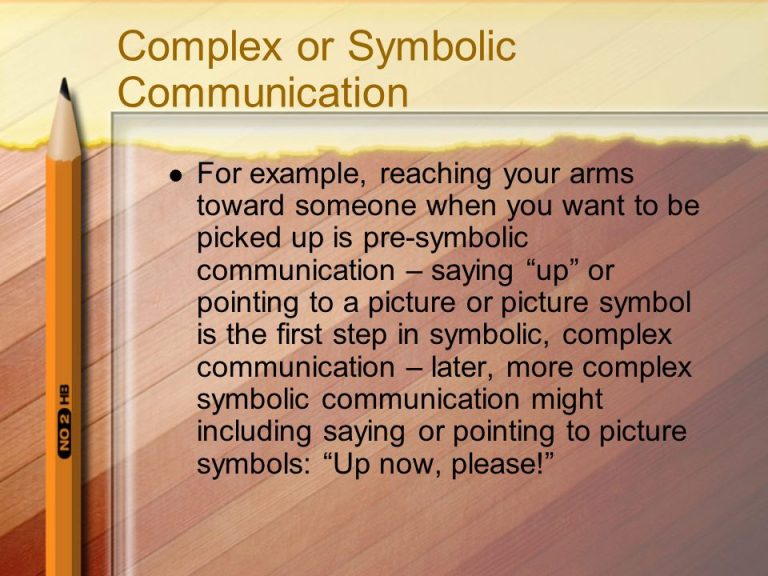How to Improve Cross-Cultural Communication at Work
To improve cross-cultural communication at work, encourage open dialogue and offer cultural sensitivity training. Promote respect and understanding among team members.
Effective cross-cultural communication is crucial in today’s global workplace. Misunderstandings can arise from cultural differences, leading to conflicts and decreased productivity. Encouraging open dialogue helps employees express their concerns and perspectives. Cultural sensitivity training educates staff on diverse customs and communication styles.
This fosters a respectful and inclusive environment, enhancing teamwork and collaboration. Leaders play a pivotal role by setting an example and promoting a culture of respect. By addressing these areas, organizations can create a more harmonious and efficient workplace. Investing in these strategies not only improves communication but also boosts employee morale and retention.
Importance Of Cross-cultural Communication
Cross-cultural communication is vital in today’s globalized world. It helps teams understand different perspectives. This understanding leads to a more inclusive work environment. It also reduces misunderstandings and conflicts. Effective cross-cultural communication can improve productivity and team morale. Companies with strong cross-cultural communication often see better results.
Enhancing Team Collaboration
Good cross-cultural communication enhances team collaboration. Team members feel understood and valued. This understanding fosters trust and respect. Teams work more efficiently and effectively. Collaboration becomes smoother, leading to better project outcomes.
| Benefit | Explanation |
|---|---|
| Trust | Builds stronger relationships among team members. |
| Respect | Encourages mutual respect for diverse perspectives. |
| Efficiency | Improves workflow and reduces misunderstandings. |
Boosting Innovation
Cross-cultural communication boosts innovation. Diverse perspectives lead to creative solutions. Teams with varied backgrounds can think outside the box. They bring unique ideas to the table. This diversity of thought drives innovation. Companies that embrace cross-cultural communication often lead in their industries.
- Diverse perspectives
- Creative solutions
- Unique ideas
- Industry leadership
Recognizing Cultural Differences
Understanding and recognizing cultural differences is key to improving cross-cultural communication at work. Every culture has its own set of norms, values, and communication styles. Recognizing these differences can help build stronger relationships and foster a more inclusive workplace.
Understanding Cultural Norms
Cultural norms dictate how people behave, communicate, and interact. Knowing these norms can prevent misunderstandings. For example, in some cultures, direct eye contact is a sign of confidence. In others, it may be seen as rude. Understanding these norms helps in adapting your communication style.
- Research common gestures and expressions used in different cultures.
- Ask colleagues about their cultural communication preferences.
- Be open to feedback on your own communication style.
Avoiding Stereotypes
Stereotypes can lead to false assumptions and poor communication. Avoiding stereotypes means treating each person as an individual. This ensures that communication is respectful and effective.
- Learn about individual differences within cultures.
- Focus on personal experiences rather than general assumptions.
- Encourage open conversations about cultural backgrounds.
Avoid making broad statements about any culture. Instead, ask questions and listen actively. This approach helps in building trust and understanding.
| Do’s | Don’ts |
|---|---|
| Research cultural norms | Avoid stereotypes |
| Ask open-ended questions | Make assumptions |
| Listen actively | Generalize |
By recognizing cultural differences and avoiding stereotypes, communication at work can be greatly improved. This leads to a more inclusive and productive environment.
Effective Communication Strategies
Effective communication in a cross-cultural workplace can be challenging. By using the right strategies, you can bridge cultural gaps and improve understanding. Here are some practical steps to enhance cross-cultural communication.
Active Listening
Active listening is crucial in cross-cultural settings. It means fully focusing on the speaker, understanding their message, and responding thoughtfully. Here are some tips:
- Maintain Eye Contact: Show you are engaged and interested.
- Use Non-Verbal Cues: Nod and smile to show understanding.
- Avoid Interrupting: Let the speaker finish before you respond.
Active listening helps build trust and reduces misunderstandings. It shows respect for different perspectives and fosters a collaborative environment.
Clear And Concise Messaging
Effective communication requires clear and concise messaging. This is especially true in a cross-cultural workplace. Here are some strategies:
- Use Simple Language: Avoid jargon and complex terms. They can confuse non-native speakers.
- Be Specific: Clearly state your main points. Use examples if needed.
- Repeat Key Information: Ensure important details are understood. Repeat them if necessary.
Clear messaging reduces errors and enhances productivity. It ensures everyone is on the same page, regardless of cultural differences.
Building Cultural Awareness
Building cultural awareness is crucial for improving cross-cultural communication at work. Understanding different cultures helps create a more inclusive and harmonious workplace. It reduces misunderstandings and enhances collaboration among team members.
Cultural Training Programs
Cultural training programs provide essential knowledge about various cultures. They teach employees about cultural norms, values, and practices. These programs often include:
- Workshops on cultural sensitivity
- Interactive sessions with cultural experts
- Role-playing exercises to practice real-life scenarios
Such training helps employees appreciate diversity. It also equips them with skills to navigate cultural differences effectively.
Encouraging Open Dialogue
Open dialogue fosters a culture of trust and respect. Encourage employees to share their cultural experiences and perspectives. This can be done through:
- Regular team meetings with open discussion segments
- Anonymous suggestion boxes for feedback and ideas
- Creating a safe space for sharing personal stories
Open dialogue helps break down barriers and builds mutual understanding. It makes everyone feel valued and heard, enhancing overall communication.
Utilizing Technology
In today’s globalized workplace, utilizing technology can significantly enhance cross-cultural communication. With the right tools, you can bridge language and cultural gaps effectively. Below, we explore key technologies to improve communication.
Virtual Communication Tools
Virtual communication tools enable teams to connect seamlessly across borders. Tools like Zoom, Microsoft Teams, and Slack offer video calls, chat, and file sharing. These features help teams understand each other better.
- Zoom: Ideal for video conferences and webinars.
- Microsoft Teams: Great for team collaboration and project management.
- Slack: Excellent for real-time messaging and quick updates.
These tools also allow for screen sharing and recording meetings. This ensures that everyone gets the same information.
Language Translation Services
Language translation services can break down language barriers. Tools like Google Translate and DeepL offer instant translations.
| Service | Features |
|---|---|
| Google Translate | Supports over 100 languages and offers voice translation. |
| DeepL | Known for accurate translations and supports multiple languages. |
These services help in understanding emails, documents, and messages. They ensure that language differences do not hinder communication.
Use these tools to foster a more inclusive workplace. They help everyone feel valued and understood.
Promoting Inclusive Leadership
Inclusive leadership is vital for cross-cultural communication at work. Leaders must understand and value diversity. They should create an environment where everyone feels respected and heard. This boosts team morale and productivity.
Leading By Example
Leaders should show respect for cultural differences. They must demonstrate this in their daily actions. This sets a positive tone for the team.
- Attend cultural events and celebrations.
- Use inclusive language in all communications.
- Show interest in team members’ backgrounds.
Leading by example encourages others to follow suit. It builds a culture of respect and inclusion.
Encouraging Diverse Perspectives
Inclusive leaders value diverse viewpoints. They actively seek input from all team members. This improves decision-making and innovation.
- Create a safe space for open dialogue.
- Encourage team members to share their ideas.
- Recognize and reward contributions from all backgrounds.
Use a feedback system to gather diverse opinions. This ensures all voices are heard. It also helps to identify any cultural misunderstandings.
| Strategy | Action |
|---|---|
| Leading by Example | Attend cultural events, use inclusive language, show interest in backgrounds |
| Encouraging Diverse Perspectives | Create safe spaces, encourage sharing, recognize contributions |
Inclusive leadership is about embracing diversity. It involves leading by example and encouraging diverse perspectives. This fosters a positive work culture and improves cross-cultural communication.
Overcoming Language Barriers
Overcoming language barriers is vital for effective cross-cultural communication at work. Misunderstandings can arise when colleagues speak different languages. By addressing these barriers, teams can collaborate more efficiently.
Learning Basic Phrases
Learning basic phrases in your colleague’s language shows respect. It also facilitates smoother communication. Here are some essential phrases to start with:
| English Phrase | Translation |
|---|---|
| Hello | Bonjour (French) |
| Thank you | Gracias (Spanish) |
| How are you? | Wie geht’s? (German) |
Knowing these phrases can break the ice. It also helps build rapport. Make a habit of using them daily.
Using Visual Aids
Visual aids can bridge language gaps effectively. They provide context and clarity. Here are some useful visual aids:
- Pictures: Use images to explain concepts or tasks.
- Charts: Charts can present data clearly and concisely.
- Diagrams: Diagrams can show processes or workflows.
Visual aids engage multiple senses. They make information easier to understand. Encourage team members to use visual aids during presentations. This approach ensures everyone is on the same page.
Evaluating Communication Efforts
Improving cross-cultural communication at work is essential. It ensures team cohesion and effective collaboration. Evaluating communication efforts is a crucial step. It allows for identifying areas that need improvement and ensuring that strategies are effective. Let’s delve into how to evaluate communication efforts efficiently.
Gathering Feedback
Gathering feedback is vital for evaluating communication efforts. Employees’ opinions provide insights into what works and what doesn’t. Using different methods to gather feedback can be very effective.
- Surveys: Conduct surveys to understand employees’ experiences.
- Focus Groups: Organize focus groups for in-depth discussions.
- One-on-One Meetings: Hold individual meetings for personal feedback.
Collecting feedback can help identify specific communication barriers. It also allows you to understand cultural nuances better.
Continuous Improvement
Continuous improvement is key to effective communication. After gathering feedback, it’s important to act on it. Implementing changes based on feedback can lead to significant improvements.
- Analyze Data: Review feedback data to find common issues.
- Develop Action Plans: Create plans to address the identified issues.
- Train Employees: Provide training to improve communication skills.
Continuous improvement ensures that communication strategies evolve. This helps in adapting to the diverse cultural backgrounds of employees.
| Method | Benefit |
|---|---|
| Surveys | Gather anonymous feedback quickly. |
| Focus Groups | Encourage open discussions and detailed feedback. |
| One-on-One Meetings | Personalized feedback from individuals. |
By continuously improving communication efforts, workplaces become more inclusive and collaborative. This leads to better team performance and job satisfaction.
Frequently Asked Questions
What Are The Key Elements Of Cross-cultural Communication?
Understanding cultural norms, active listening, and showing respect are essential for effective cross-cultural communication at work.
How Can Language Barriers Be Overcome?
Use simple language, visual aids, and translation tools to bridge language gaps and enhance understanding.
Why Is Cultural Awareness Important At Work?
Cultural awareness fosters inclusivity, reduces misunderstandings, and enhances teamwork and productivity in a diverse workplace.
Conclusion
Effective cross-cultural communication enhances workplace harmony and productivity. Implementing these tips can foster better understanding among diverse teams. Embrace cultural differences and encourage open dialogue. Continuous learning and practice will lead to improved communication skills. Prioritizing cross-cultural communication benefits everyone and drives organizational success.



